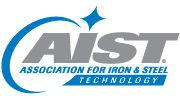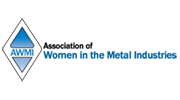The largest Steel producer in the country, Nucor Steel, is aiming for neutral carbon emissions by the year 2050. With the steel industry alone making up roughly 7% of all greenhouse gasses released into the atmosphere each year, there is a large focus within all steel companies in reducing carbon emissions starting now and for the foreseeable future.
Nucor Steel is already 1 step ahead because of cleaner steel making methods than other producers. Nucor utilizes Electric Arc Furnaces to melt recycled scrap metal to produce steel, whereas most other Steel companies are still using the older method of the Blast Oxygen Furnace, which requires iron, coal, and limestone to produce steel (rhynew, 2016). Both methods of production are utilized in the steel industry, but one is much more environmentally friendly than the other.
The decision by Nucor to primarily use Electric Arc Furnaces also allowed it to produce its steel in a way that is almost 75% cleaner regarding carbon emissions than the Blast Oxygen Furnace (Silverstein, 2022). Nucor takes it a step further and even captures and recycles most of the metal dust produced from the EAF’s to minimize waste and pollution. To put this in perspective, in 2018 the average amount of Carbon Dioxide emitted for each ton of steel produced was roughly 1.85 tons (Hoffmann et al., 2022). In comparison, with Nucor utilizing EAF steel production, they produce an average of only .47 tons of CO2 per ton. Furthermore, the steel giant has goals to reduce carbon emissions to .38 tons per ton produced by 2030 and net zero by 2050 (Silverstein, 2022). This is an impressive goal, as Nucor’s current carbon intensity numbers are already below many other companies’ carbon goals for 2030.
Not only is the Electric Arc Furnace an incredibly efficient way to produce steel, but it is also cost effective as the difference in raw material price varies greatly. The average cost of scrap steel to produce 1 ton of steel is much less in an EAF compared to a BOF (rhynew, 2016). However, there is a downside to the EAF which would be the volatility of scrap metal price. The EAF requires quality scrap to produce high grade steel which could be pricey at times depending on demand.
Nucor will take their green initiative a step further with the announcement of their latest $2.7B Greenfield Project recently announced to be built in West Virginia. The Mill is being built along with 2 green electric power hubs to further reduce the carbon intensity of Nucor’s steel production. The location of this mill was also taken into consideration as it is right next to the Ohio river, giving Nucor an easy way to transport and receive scrap metal for melting (Silverstein, 2022).
Sources
- Silverstein, K. (2022, September 16). Nucor boasts superior greenhouse gas reductions for steel operations. Environment + Energy Leader. Retrieved September 28, 2022, from https://www.environmentalleader.com/2022/09/nucor-boasts-superior-greenhouse-gas-reductions-for-steel-operations/
- rhynew. (2016, March 7). Bof and EAF Steels: What are the differences? – economics 243 fall 2018. Retrieved September 28, 2022, from https://econ243.academic.wlu.edu/2016/03/07/bof-and-eaf-steels-what-are-the-differences/
- Hoffmann, C., Hoey, M. V., & Zeumer, B. (2022, August 23). Decarbonization Challenge for Steel. McKinsey & Company. Retrieved September 28, 2022, from https://www.mckinsey.com/industries/metals-and-mining/our-insights/decarbonization-challenge-for-steel




